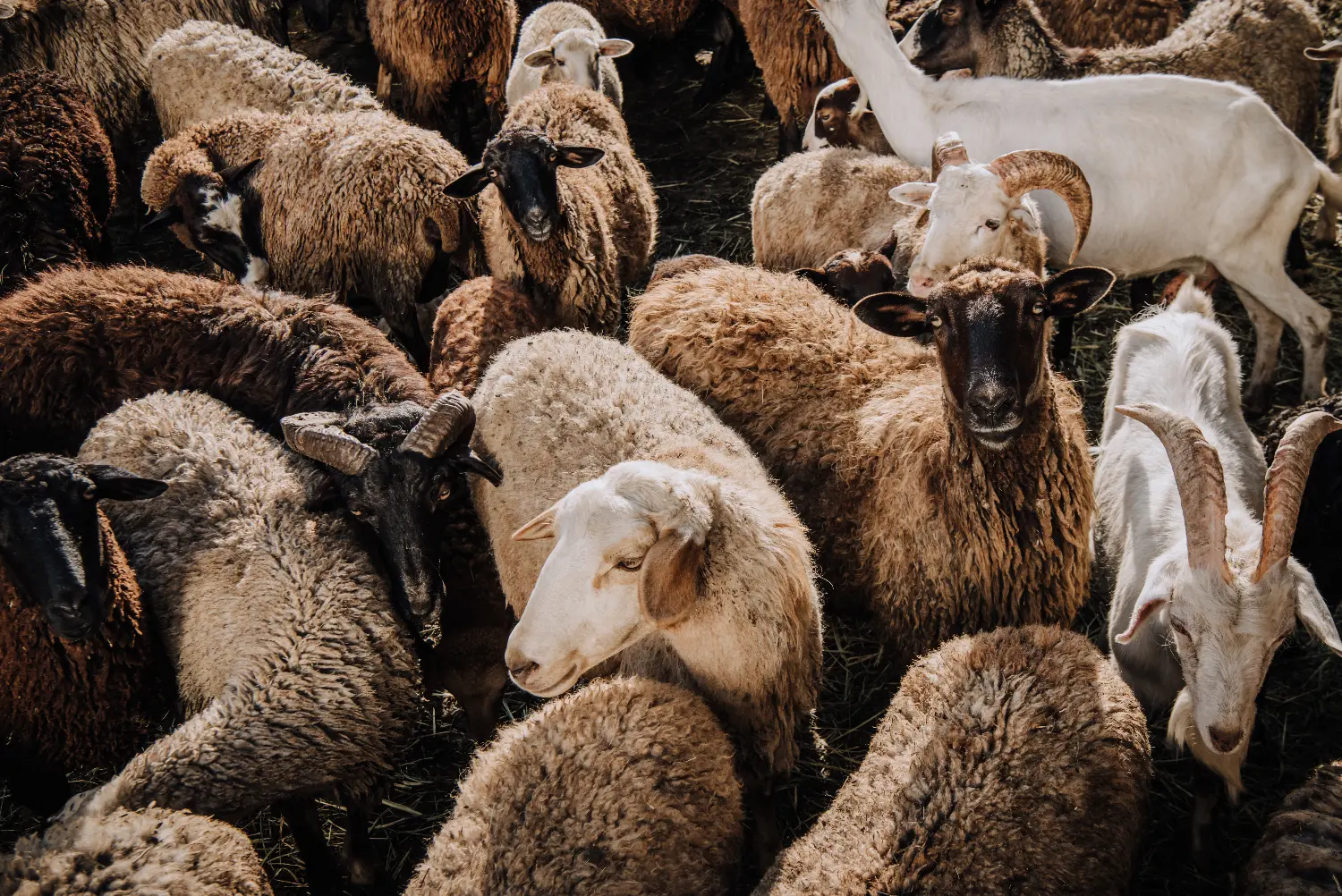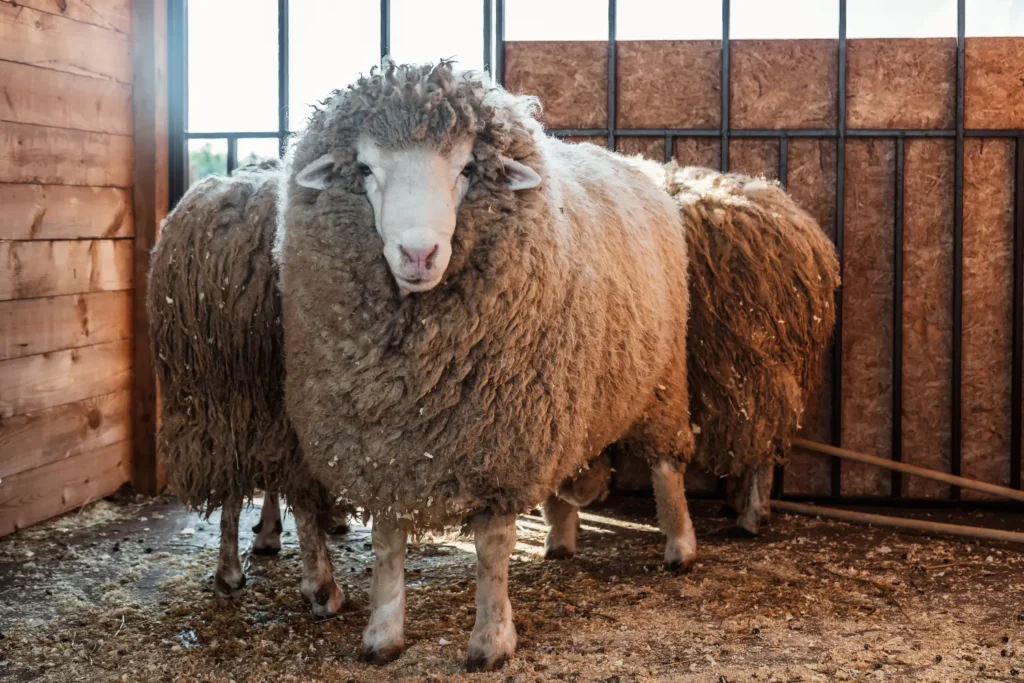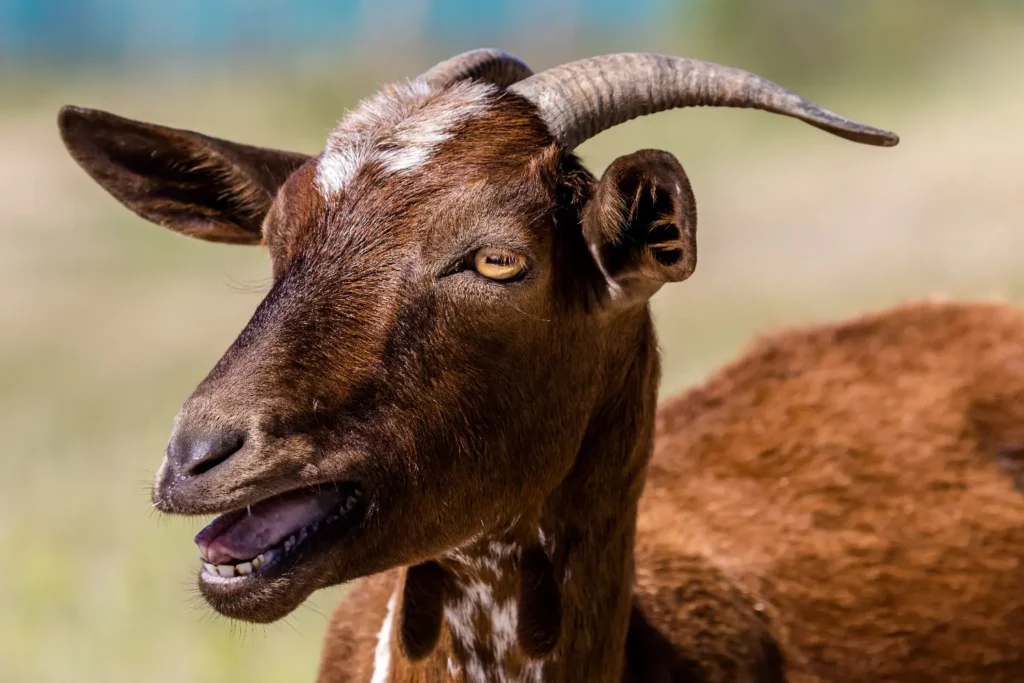
Scrapie, also known as scrapie, is a degenerative and fatal disease of the central nervous system that was first recognized in sheep in Great Britain and Western Europe more than 250 years ago. It has since spread to all regions of the world and affects many breeds of wool and meat sheep, as well as some goats. The most effective way to control scrapie is to maintain a closed flock. It may also be useful to use only certified scrapie-free rams and ewes and breed genetically resistant sheep or goats.
Animals affected by scrapie show a variety of symptoms, including incessant scratching or chewing of the skin (hence the name “scrapie”), weight loss without decreased appetite, weakness, head and neck tremors, and progressing locomotor incoordination. until the decubitus. Affected animals usually die between 1 and 6 months after the appearance of clinical symptoms.
Incubation period
It usually takes two to five years for signs of scrapie or “scrape” to develop in an infected animal. The disease is believed to be caused by a prion, a subviral protein particle that causes the normal proteins around it to change into their abnormal form and spread. Prions are very resistant to destruction by heat, transformation or normal sterilization processes and do not provoke an immune response in affected animals.
The agent responsible for the disease is found in lymphatic tissues and nerve cells, especially those of the brain. The prion is believed to invade these tissues and take over protein synthesis, eventually causing sheets of abnormal proteins to form in the brain, resulting in the classic “spongy” appearance of the affected tissue.
The United States National Sheep and Goat Eradication Program (NSEP) focuses on eliminating the presence of scrapie in sheep and goats in domestic flocks, both by monitoring infection among cull sheep sampled at the slaughterhouse and by suspected cases reported by veterinarians or producers. The NSEP requires that all rams, male and female ewes over 18 months of age, and all lambs be tested for scrapie before being used in breeding flocks.
Additionally, all lambs and adult ewes showing symptoms of wasting or neurological signs should be tested for scrapie in a laboratory. The NSEP also requires that all slaughtered sheep and goats over 18 months of age, including “down” animals and those sent for emergency slaughter, be tested for scrapie.
The NSEP requires that all slaughtered sheep and goats present an international veterinary certificate certifying that they come from a scrapie-free establishment. The certificate must be provided by the Official Veterinarian for each sheep or goat that is exported.
You can request support from our specialist veterinarians by clicking here.

Clinical signs of scrapie
Infection of sheep and goats with the prion agent that causes scrapie causes fatal transmissible spongiform encephalopathy (TSE). The disease causes a variety of clinical signs, which are believed to be caused by the deposition of abnormal prions in brain cells. Prions are proteins that normally function in the immune system, but when they change shape they can cause an abnormally large number of proteins to fold in them, resulting in a series of neurological changes.
Classical scrapie is a progressive disorder. At the beginning of the disease, animals lose condition and become emaciated. Over time, the affected animal becomes completely blind and can no longer stand, giving the disease its name: scrapie.
Clinical signs of classic scrapie include weight loss, itchy skin or wool that may be pulled off the body, tremors in the head, and high-stepping or bunny-like walking on the front legs. In some cases, affected animals bleed when scratched or bitten. Sheep affected by scrapie are very thin and can often be identified by areas of their snout and body that are covered with dry, blackened fur.
Atypical scrapie is a spontaneous form of the disease that can occur in flocks previously considered free of classical scrapie. Atypical scrapie occurs when normal herd-level resistance to classical scrapie is overcome by acquisition of a different genotype of prion protein (PrPsc).
The new type of atypical scrapie is associated with the VRQ genotype in sheep and is believed to spread differently than the traditional form of the disease. Infection of herds with atypical scrapie occurs mainly in the tonsils and Peyer's patches, areas rich in lymphatic tissue. The infectious agents then spread to other parts of the lymph nodes, including those that receive lymph from the intestines.
Atypical scrapie is less of a problem for the livestock industry than the classic version of the disease because it does not spread quickly from animal to animal. Additionally, the fact that it appears in isolation means that it is not as likely to infect a herd and affect the entire population. However, it remains a reportable disease under the Animal Health Act and any suspected cases must be reported to the Canadian Food Inspection Agency.
You can read about bacterial infections in animals by clicking Here.
Transmission
Scrapie spreads vertically, primarily through direct contact between breeding animals. It can also be transmitted horizontally to uninfected lambs of the same ewe through the placenta or fetal fluids or through the milk and colostrum of affected ewes.
It can also be transmitted through contaminated wool and through the sale of infected sheep, goats or other animals, including hay or straw from infected flocks, as well as through the purchase of feed from such flocks. Generally, if two or more animals of different bloodlines within a flock are diagnosed with scrapie, all animals in that flock, as well as their offspring and other lambs born in contemporaneous breeding groups, must be culled.

Prevention
There is currently no vaccine against scrapie, the disease can be prevented through good general animal husbandry and biosecurity practices. These include individual identification of animals, record keeping, proper separation of animals during breeding and calving, increased cleaning of the calving environment, and disinfection of equipment used between animals. The use of single-use injectable needles is also important to reduce the risk of infection.
The most effective means of preventing scrapie is to avoid exposing sheep and goats or the herd to an infected animal. Infected sheep and goats must be euthanized. Sheep and goats intended for slaughter should not be used as feed for other flocks until the disease has been eradicated from those premises.
Although scrapie vaccines are not available for sheep or goats, genetic testing for resistance to classical scrapie became commercially available in 2018. Polymorphisms in the PRNP gene conferring a serine at codon 127 (S127) instead of Glycine (G127), aspartic acid at codon 142 (M142) instead of isoleucine (I142), asparagine at codon 146 (N146), and lysine at codon 222 (K222) instead of glutamine (Q222) provide protection against classical scrapie.
Certain genetic haplotypes in both sheep and goats confer natural genetic resistance to classical scrapie. These genotypes are known as “R” or “R2”. Furthermore, recent research has revealed that the strain of scrapie agent also affects the incubation period and the development of clinical signs.
The disease can be diagnosed by examining the animal postmortem. Abnormal prion protein in the brain is visible with certain microscopes and can be detected by specific antibody tests. Unfortunately, the onset of clinical signs is delayed and it can be difficult to diagnose the condition in time.
Herds with a high percentage of susceptible sheep or goats can experience significant production losses over several years. Once the scrapie population in one herd reaches critical levels, the disease will spread to neighboring herds. This spread of the disease prevents the United States from exporting livestock, including breeding stock and semen, internationally.
The United States Department of Agriculture, through its Animal and Plant Health Inspection Service (APHIS), administers regulations at 9 CFR part 79 that restrict interstate movement of susceptible sheep and goats. Additionally, APHIS offers a voluntary scrapie-free flock certification program.
You can read more about other diseases of cattle, sheep and goats at: What is Q Fever?